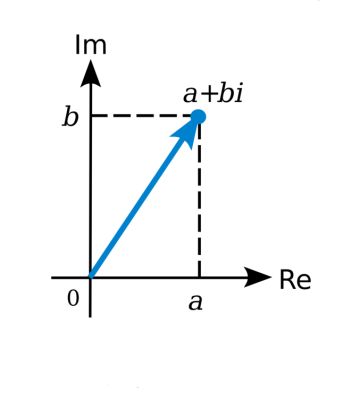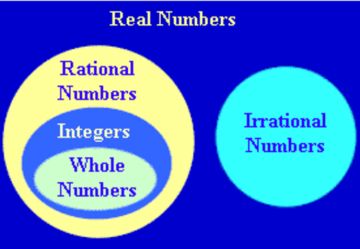Engineering involves a lot of math. And engineers sometimes get so involved in manipulating numbers that they forget some of the principles underlying the numerical manipulations they take for granted. So here’s a quick review of some fundamentals behind several classes of engineering equations.
First consider complex and imaginary numbers. The square root of a number is the quantity that, when multiplied by itself, yields a product equal to that number. The square root of +4 is +2. Another square root of +4 is -2. All positive numbers have two square roots because:
(+2) x (+2) = +4
(-2) x (-2) = +4
A square root may be a whole integer, a ratio such as +2/3, which is the square root of +4/9, or it may be an irrational number. This is simple enough, but if we happen to ask what is the square root of a negative number, we very quickly encounter the fact that there is no conventional solution. There is no integer, positive or negative, such that when multiplied by itself has a product that is a negative number. From time to time in the course of solving for an unknown, the square root of a negative quantity enters the picture, and here we enter a strange domain with some odd terminology.
The square root of minus one is called an imaginary number. It is designated by i, in some circles known as the j operator. To clarify:
j x j = -1
Also:
(-j) x (-j) = -1
And:
(-j) x (+j) = +1
In electronics, we often have occasion to add a real (non-imaginary) number to the j or ioperator. The sum is known as a complex number.

Real and imaginary numbers can both be represented on a one-dimensional line, and therefore are called scalar quantities. In contrast, complex numbers must be shown in two dimensions, as vector quantities.
Following Pythagoras, a complex number can be expressed by representing the real and imaginary components as legs of a right triangle, and the complex sum or difference as the hypotenuse. Accordingly, the real and imaginary numbers are first squared, then added. Take the square root of the sum, and you’re good.
Resistance in an electronic circuit is scalar, as is inductive reactance or capacitive reactance. Impedance is an umbrella term that is used to designate the composite opposition to the flow of current. It is a vector quantity.
Two prominent equations, used on a daily basis by electronic engineers, are:
XL = 2 Π fL, and
XC = 1/(2 Π fC), where
XL and XC are inductive and capacitive reactance and f is frequency in Hertz.
From these equations, we see that inductive and capacitive reactances depend on frequency, unlike resistance, which, except in special cases, is not frequency dependent.
Now consider rational numbers. Mathematicians have investigated whether there exist whole integers between zero and one. If so, they could be either as yet undiscovered or in principle be unknowable by human intellect.
First, some definitions:
 Zero is the whole integer between +1 and -1. One is a single entity. It is the lowest cardinal number, half of two. A rational number is a number that can be made by dividing two integers (with the denominator not equal to zero). Because the denominator may be one, all integers are rational numbers.
Zero is the whole integer between +1 and -1. One is a single entity. It is the lowest cardinal number, half of two. A rational number is a number that can be made by dividing two integers (with the denominator not equal to zero). Because the denominator may be one, all integers are rational numbers.
A natural number is a whole number equal to or greater than one. It does not include zero and it does not include negative numbers.
A whole integer is a natural number and also zero. It does not include negative numbers or numbers that can be expressed only as a fraction.
With these definitions in mind, we can comprehend if not agree with some of the purported “proofs” that there are no whole numbers greater than zero and less than +1, i.e. lying between them:
1. Every non-empty set of positive integers contains a smallest element. Assume that there exists an integer between 0 and +1. Let n be the smallest such integer. Since n is less than 1, n2 is also less than 1. That means n is not the smallest element in the set, since n2 is smaller and a member of the set. Therefore the set of positive integers between 0 and +1 must be empty.
2. You can construct the set of all integers by adding or subtracting 1 from 0 any number of times. If an integer existed greater than 0 and less than 1, you should find it by adding one to 0 a certain number of times. But 0 = 0 and 1 = 0 + 1. Everything else is greater than 1. Therefore, there are no integers between 0 and 1.
3. An integer is a whole number, not a fraction, that can be positive, negative or zero. Integers cannot have decimal places. Between 0 and 1 there are only fractions, decimals and irrational numbers. There are no integers between 0 and 1 because of the definition of integers.
4. Integers are whole (fractionless) numbers. Therefore no integer between 0 and 1 exists because all numbers between 0 and 1 are fractions.
Some of these proofs seem trivial or invalid because they depend on presupposed definitions. Taken together, these seem to overwhelm the opposition. But it is hard to prove a negative because some undiscovered region can open up new possibilities outside the current perspective.
Perhaps there are whole integers between 0 and 1 in some alternate reality or inside the irrational territory within a black hole or some unknown variant thereof.
Now consider a special kind of integer, the prime number. It is any whole integer that is not evenly divisible by any whole integer except for itself and one. If it were not for these two exceptions, there would be no prime numbers. Non-prime numbers greater than one are known as composite numbers.

The first several primes are immediately evident: 2, 3, 5, 7, 11, 13, 17, 19, 23 and 31 can be readily identified. Higher primes are farther apart and become more difficult to spot, although many composite numbers remain evident. For one thing, no even numbers except 2 are primes. Many composites are easily discerned. For example, 999 is divisible by 3 and 333.
What we know:
There are infinitely many prime numbers, as shown by Euclid around 300 BC.
The Prime Number Theorem — the work of several mathematicians spanning the eighteenth, nineteenth and twentieth centuries — states that the probability of any number being a prime is inversely proportional to its number of digits and also to its logarithm. This is a formal interpretation of the intuitive notion that the higher you go, the farther apart are the primes.
Goldbach’s conjecture, proposed by the German mathematician Christian Goldbach in a letter dated June 7, 1742 to Leonhard Euler, set forth the idea that every even integer greater than 2 can be expressed as the sum of two primes. For example, 5 = 2 + 3. This principle appears to be true but it has not been conclusively proved.
The largest known prime is composed of 17,425,170 digits.
Trial division can be used to ascertain the primality of an integer in question. If a given number is not divisible by any integer between 2 and its square root, it is a prime.
What we don’t know:
There is no known formula for generating prime numbers.
It is not feasible to ascertain the primality of large numbers by trial division, because of the lengthy time involved in this method.
Many conjectures regarding primes have been proposed. Four problems set forth by Edmund Landau in 1912 remain unsolved. In a speech, he stated that these enigmas are unattackable at the present state of science. In addition to Goldbach’s Conjecture, these problems may be stated as:
The Twin Prime Conjecture – Are there infinitely many primes p such that p + 2 is prime?
Legendre’s Conjecture – Does there always exist at least one prime between perfect squares?
Are there infinitely many primes p such that p – 1 is a perfect square? Restated, are there infinitely many primes taking the form n2 + 1?
As can be seen, the issues raised by an examination of phenomena associated with primality are not trivial. They take us far into number theory and as has been discovered in our Internet Age, and they are highly relevant in the new field of cryptography.

Leave a Reply
You must be logged in to post a comment.